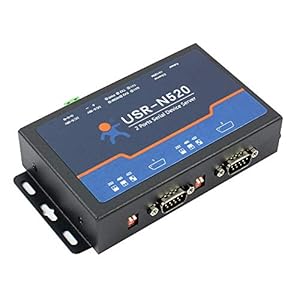Device Servers
A description for device servers would highlight their functionality in enabling network connectivity and remote management of devices. Here’s an example:
“Device servers are specialized networking devices that provide connectivity and remote management capabilities for various devices within a network. These servers act as a bridge between devices and the network, facilitating communication and control over a wide range of devices, such as industrial equipment, printers, scanners, and more.
The description may emphasize that device servers offer reliable and secure connectivity options, allowing devices to be accessed and managed remotely over local area networks (LANs) or the internet. They typically support standard network protocols, such as Ethernet or Wi-Fi, ensuring seamless integration into existing network infrastructures.
Furthermore, the description could mention that device servers often feature built-in management interfaces or software platforms that provide centralized control and monitoring of connected devices. This allows administrators or users to remotely configure, update firmware, monitor performance, and troubleshoot devices without the need for physical access.
Additionally, the description might highlight that device servers are designed to enhance efficiency and productivity by enabling remote access and control of devices from anywhere, reducing the need for on-site visits or manual intervention. This is particularly valuable in scenarios where devices are geographically dispersed or located in challenging or inaccessible environments.
Moreover, the description could mention that device servers offer security features, such as encryption protocols, access control, and authentication mechanisms, ensuring the confidentiality and integrity of data transmitted between devices and management systems.
Overall, the description aims to convey that device servers play a vital role in network connectivity and remote device management. They streamline operations, increase flexibility, and enhance control over diverse devices within a network, ultimately improving productivity and efficiency for organizations relying on networked devices.”
Showing 1–12 of 57 results















